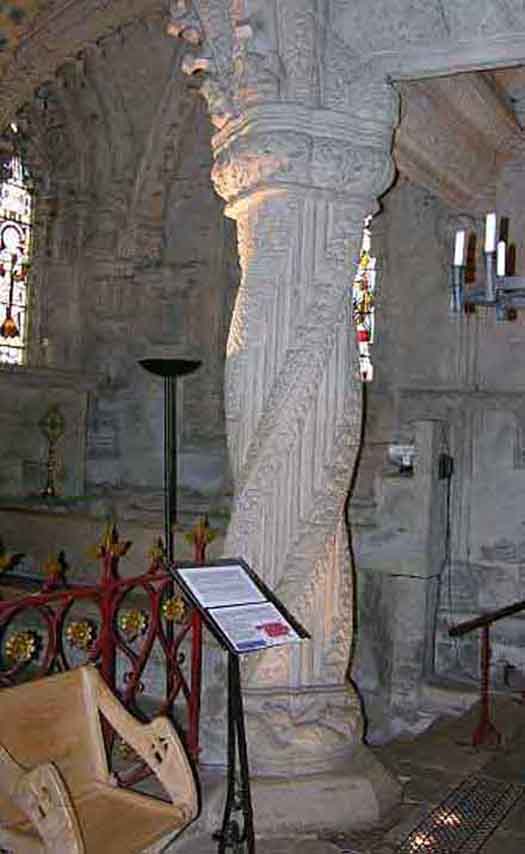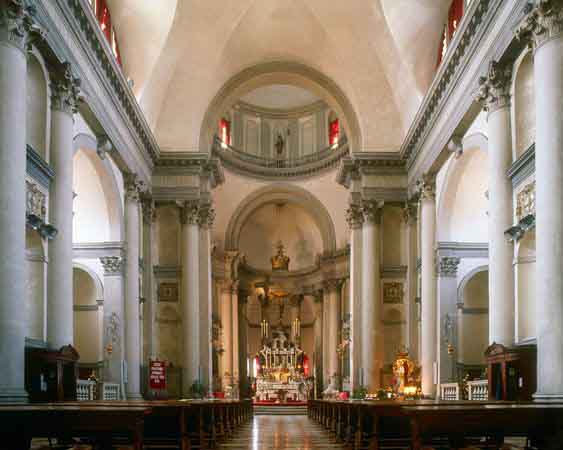

Reality is a consciousness hologram (simulation) created by sound, light and color. It's design follows a sacred architectural blueprint or design following the iconographic motif of the golden spiral.
The acoustics of many ancient buildings throughout the world, seem to replicate this pattern as if encoded harmonics. This is especially true with European Cathedrals and Churches. Their design magnifies harmonics - that some believe reveal the secret of creation set in place by our ancient ancestors to be decoded at this time. An example of codes and music can be found in this Crystalinks file Decoding Roslyn Chapel.
-
Sacred architecture (also known as religious architecture) is a religious architectural practice concerned with the design and construction of places of worship and/or sacred or intentional space, such as churches, mosques, stupas, synagogues, and temples. Many cultures devoted considerable resources to their sacred architecture, and their places of worship, religion and sacred spaces are amongst the most impressive and permanent monolithic buildings created by humanity. Conversely, sacred architecture as a locale for meta-intimacy may also be non-monolithic, ephemeral and intensely private, personal and non-public.
Sacred, religious and holy structures often evolved over centuries and were the largest buildings in the world, prior to the modern skyscraper. While the various styles employed in sacred architecture sometimes reflected trends in other structures, these styles also remained unique from the contemporary architecture used in other structures. With the rise of monotheism, religious buildings increasingly became centres of worship and meditation.
The Western scholarly discipline of the History of Architecture itself closely follows the history of religious architecture from ancient times until the Baroque period, at least.
Sacred geometry, iconography and the use of sophisticated semiotics such as signs, symbols and religious motif are endemic to sacred architecture.

Proportion Architecture -- Among the Cistercians, Gothic, Renaissance, Egyptian, Semitic, Babylonian, Arab, Greek and Roman traditions; the harmonic proportions, human proportions, cosmological/astronomical proportions and orientations, and various aspects of sacred geometry (the vesica piscis), pentagram, golden ratio, and small whole-number ratios were all applied as part of the practice of architectural design.

The Redentore is among Venice churches emulated in a new series of acoustics simulations
Landmark churches may have been partly designed for two-speaker effect. The nobility of Renaissance Venice may have been among the first to hear music in stereo, according to new acoustics research. Architectural innovations in churches may have been intended to clearly separate the sounds from a split choir, audio engineers announced this week.
The researchers used computer models to simulate what concerts in some of the city's churches - including tourist staples such as the Basilica of San Marco - sounded like 400 years ago. "First, we modeled the acoustics for the churches as they are now," explained Braxton Boren, a student in music technology at New York University.
"Once we were sure that the models were functioning correctly, we consulted with architectural historians and professional acousticians to tweak the models" to simulate how the churches might have sounded during the Renaissance, said Boren, who presented the findings this week at an Acoustical Society of America meeting in San Diego, California.
Boren and team member Malcom Longair of the University of Cambridge modeled the acoustics of four 16th-century Venetian churches that still exist: the churches of Ospedaletto, the Redentore, San Francesco della Vigna, as well as the Basilica of San Marco.
"A Very Dramatic Effect" in Venice
Among the study's main findings: Galleries in the Basilica of San Marco that were constructed after the main structure were likely built to enhance the stereo effect from the separated choir for the Doge, the ruler of Venice and other nobility, who sat in an area near the altar called the chancel - as some historians had speculated.
"It seems like the galleries were built for the express purpose of projecting the choir up and out to the Doge and the other important people sitting in the chancel," Boren said.
The simulation shows that the galleries helped produce a complimentary, double-acoustic effect: The chancel audience benefited from the echo-dampening effect of the throngs of people sitting behind them, which helped produce a warmer, more intimate sound. At the same time, the nobles were also close enough to the split choir to actually hear the songs in stereo.
"It was a very dramatic effect" and comparable to that of a modern concert hall, Boren said.
Audience Makes the Difference
The modeling work also showed that music and songs in many of the churches would have sounded different depending on how many people were in attendance. For example, one expert that the team consulted pointed out that on special religious occasions, echoes in the Church of the Redentore would have been significantly reduced. Among the temporary muffling effects would have been tapestries on walls and columns, throngs of attendees, and wooden seats brought out to accommodate the crowd.
The model showed that echo durations would have been cut in half when the church was full and decorated. "The crowd made a huge difference," Boren said. "The tapestry also made a significant difference, but not as much as the people."
The result is that the fast, polyphonic - or multipart - music performed in Venice during the Renaissance would have sounded much clearer in the church during these festive occasions. It's not known if church architects gave much consideration to the acoustics of their creations, but Andrew Hopkins, an architectural historian at the University of L'Aquila in Italy, thinks that's certainly possible.
"Remember, architects in Venice must have gone to Mass in a lot of different churches and must have been aware that the acoustics were wildly different in various churches," said Hopkins, who was not involved in the new modeling work.
Even if architects were ignorant of the audio difference in an empty church versus a crowded one, the fact would not have been lost on composers, whose music may have been partly influenced by the acoustics of certain venues, Hopkins said in an email.
"I think it certainly affected what, if any, and how many instruments were used, and also how many choristers," he added. "Obviously slower songs would have been clearer." David Bradley, a physicist at Vassar College in New York, agreed. "It's been shown time and again throughout history that a composer will create music for the space that it's intended for," he said.
Bradley said that it's common practice for acousticians today to account for the sound-dampening effects of an audience when designing concert halls. "We often do two simulations, one occupied and one unoccupied," explained Bradley, who also did not participate in the project. "That gives us the extreme values of the various acoustic quantities ... and we know that in reality it's going to be somewhere in between."
Can You Hear It?
Because many old Venetian churches are never as crowded today as they were during the Renaissance, modern visitors are unlikely to enjoy the same aural experience as the Doge. For the most authentic experience, Hopkins suggested going to a Venetian church during Sunday Mass.
NYU's Boren also recommended tourists try visiting some of the smaller churches - such as the church of Ospedaletto, where a crowd is not necessary to produce rich musical clarity - or try standing in the front or middle sections of the Basilica of San Marco, which are the audio "sweet spots" for that particular church. "As I recall, there are no places where the general public can sit in the chancel," Boren said, "so it wouldn't have exactly the same effect that we were simulating."